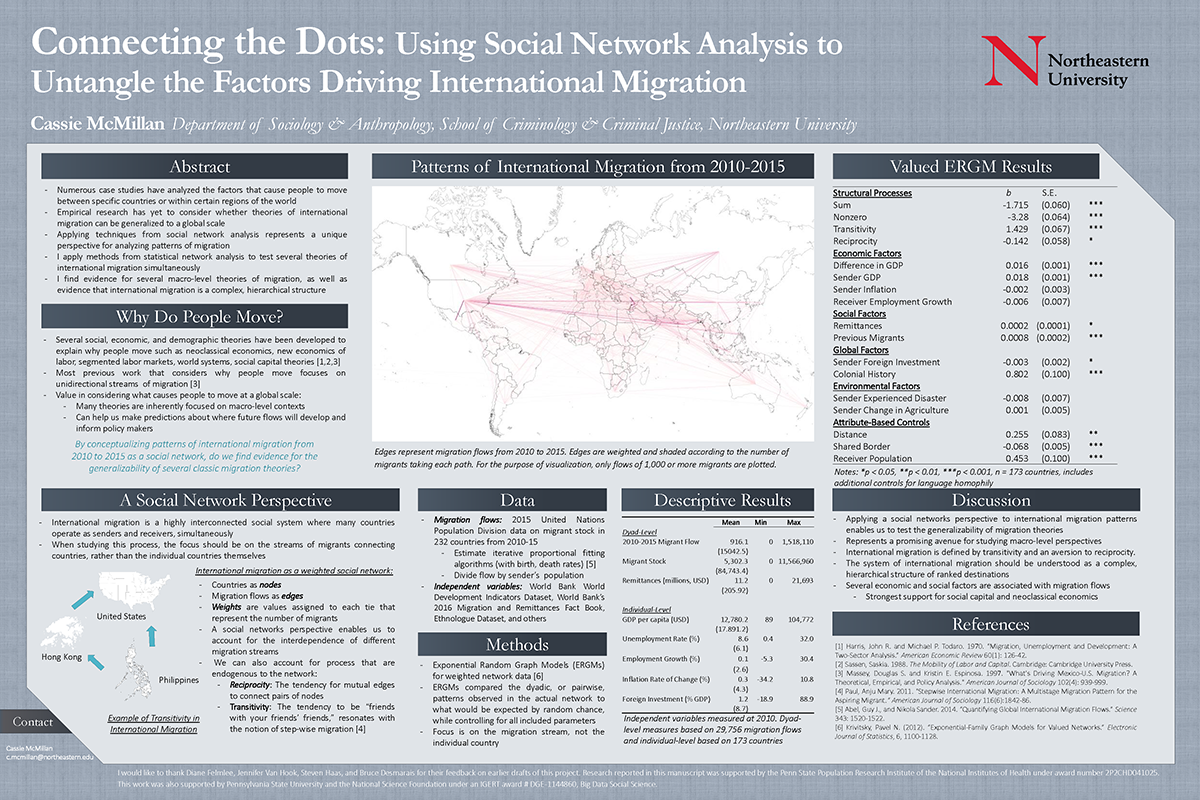
Connecting the Dots: Applying a Social Network Perspective to Disentangle the Factors Driving International Migration
Cassie McMillan
Numerous case studies have analyzed the factors that cause people to move between specific countries or within certain regions of the world. However, empirical research has yet to consider whether theories of international migration can be generalized to a global scale. While making generalizations about the global system of international migration raises unique methodological challenges, I argue that these can be alleviated through the adoption of a social network perspective. In the current project, I conceptualize the phenomenon of international migration as a social network, in which countries are individual actors and ties are migration flows that are weighted by the number of people making an international move. Using data published from the United Nations on migration between 173 countries from 2010 to 2015, I apply valued exponential random graph models (ERGMs) to disentangle the theoretically-motivated factors that drive international migration. While I find modest support for theories of neoclassical economics and the new economics of labor, I uncover convincing evidence that social capital theory can be generalized to explain patterns of migration of a global scale. Furthermore, by considering the endogenous structural patterns of the network (e.g., reciprocity, transitivity), I argue that international migration is defined by a hierarchical system of ranked destinations that reflects extant patterns of global inequality. There are more opportunities for those who are born in countries at the top of this hierarchy, while those on the lower rungs are largely excluded. 
← Schedule

